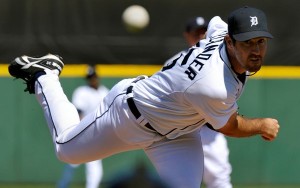“Get me over” breaking pitches
May 31, 2012 by Coach McCreary
Filed under Pitching
When pitchers get to the high school and college levels, they often will have more than one breaking pitch. Usually one stands out as the better pitch. For example, a pitcher may throw a
good slider but also have a fairly ineffective curve ball. It not surprising that this pitcher uses his slider most of the time especially when he needs an out. His dilemma becomes when should he use his curve ball or should he just scrap it altogether?
The phrase “get me over” breaking pitch refers to a pitch that isn’t all that effective unless used in certain situations. The curve ball mentioned above that is thrown in a 1-2 count probably is not going to get many hitters out. However, there are situations when a pitcher can very effectively use a less-than-great breaking pitch. These situation basically involve any time a breaking pitch simply has to be thrown for a strike to work. Such situations include counts like 0-0, 2-0, and 3-0. In these counts, most hitters sit dead fastball and will take anything that is off speed. As a result, a pitcher’s second or third best breaking pitch can be effective in these counts because all he has to do is lay it in for a strike since the batter most likely will not swing. All this is why the phrase “get me over” pitch is used. All the pitcher has to do is get it over the plate.
If a pitcher has an average breaking pitch at best, it is to his advantage to practice it as his “get me over” pitch. When doing so in the bullpen, he should focus all his attention on just throwing it for a strike. The sharpness of the break doesn’t matter so much. Just get it over. Although his best breaking pitch can be thrown out of the zone to get batters out, his secondary one generally will not. He’s better off mastering the ability to lay that pitch in there and bringing it out only in the right situations.
If he can do all this effectively, the pitcher can save his best pitches for when he really needs an out instead of showing it frequently which allows the batter to gather more information about it. It also forces the batter to think about another pitch which is in every pitcher’s best interest as well.






Leave a Reply